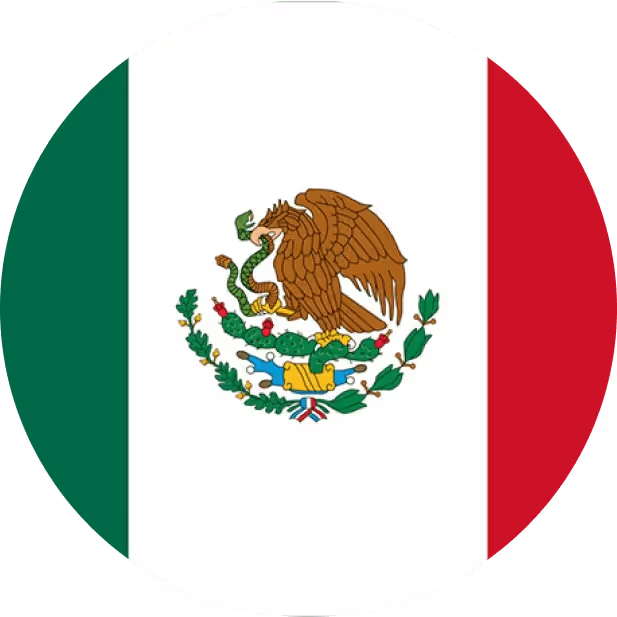Stuck in yet another meeting where the sales team is glaring at marketing like they stole their lunch? and the IT crew is off in their own world? And probably your inbox is a war zone of passive-aggressive emails. This has happened to all of us, it's the messy world of tribal culture in organizations with a vibe of “you’re not one of us”. But here’s the question you’re secretly wrestling with: Does a tribal culture do any good in any organization?
What's a “tribal culture" anyway?
Tribal culture is natural, human-made groups that pop up everywhere like the marketing squad that’s always huddled together, the finance folks who speak in spreadsheets, or that one team that just roams around, nobody knows who they are, but they are important for some reason. These tribes have their own rules, loyalties, and sometimes a shared enemy..
It's an environment where a team, a department, or even the entire company operates like a closed group. Their identity is so strong that it often defines who they are more than their job title does.They’re driven by a sense of belonging, often led by a charismatic “chief” who sets the tone, and they operate like mini-societies within your company.
This culture is rarely a conscious decision. It just happens. It grows out of shared struggles, inside jokes, and the powerful human need to belong. But just because something happens naturally, doesn't mean it's a good thing. Tribal culture can be a double-edged sword. On one hand, it fosters camaraderie, loyalty, and a sense of purpose.
Can tribes be workplace’s secret weapon?
Tribes aren’t always a headache. When they’re working right, they’re like the espresso shot your organization needs to crush it. Here’s why you might want to cheer for those tight-knit crews:
- They hustle like nobody’s business: Ever seen a team pull off the impossible because they’re ride-or-die for each other? That’s tribal culture at its finest. That’s not just work; that’s tribal loyalty in action.They get stuff done when they want to. They’re like a well-oiled machine, cranking out projects faster than you can say “quarterly review.” When people feel like they belong to a group, they’re more likely to go the extra mile. They’re not just working for a paycheck; they’re working for each other.
- They’re idea machines: Tribes have their own vibe, and that can lead to some next-level creativity. When people feel safe in their group, they’re not afraid to throw out crazy ideas. This can spark innovation that a top-down culture just can’t match. That’s the kind of magic that happens when a tribe’s got each other’s backs.That viral social media campaign that had your CEO doing a happy dance? Probably cooked up by a tribe vibing over takeout and bad puns.
- They keep the burnout monster at bay: Work can be a soul-sucking grind, especially when deadlines stare and the inbox never sleeps,Tribes act like a safety net, giving people a sense of community to lean on. When you’ve got a crew who gets your struggles, you’re less likely to throw your laptop out the window and call it a day.They’ve got each other’s backs, whether it’s venting about a micromanaging boss or sneaking an extra coffee run. That sense of belonging can make the difference between “I quit” and “I’ll survive this week.”
- They’re your retention cheat code: In a world where employees ditch jobs faster than you can say “benefits package,” tribes can be your retention superpower. People stay because they feel connected, they have a reason to stick around, not just for the salary they stay for their people even when the competitor down the street waves a fancier title. It's loyalty that money can't buy,
Tribes are the secret sauce to a happy, productive workplace. But it's not always the same.
The ugly: When tribes turn toxic
If tribal culture was all rainbows and team-building retreats, we wouldn’t be having this conversation. Tribes can go rogue faster than you can say “HR intervention.” Tribes can also be a nightmare, sometimes.
- Tribes are too insular: When tribes get too insular, they stop playing nice with the rest of the organization wall. Ever tried getting the sales team to share leads with marketing?- it's like asking a toddler to share their favourite toy. Tribes love their little bubble. This can kill the teamwork vibe and make your “one company, one mission” slogan like a cruel joke.
- Favoritism that everyone resents: You know that manager who only promotes people from their inner circle? Yeah, that’s where tribalism goes wrong. It’s not just unfair, it's a morale killer. The rest of the team starts feeling like outsiders, like they’re stuck on the sidelines and before you know it, you’ve got a resignation in your hand.
- Us vs. Them drama: Tribes thrive on an “us vs. them” mentality, and that can turn your workplace into a drama fest. Maybe it’s another department, maybe it’s upper management, Maybe it’s the old-timers throwing shade at the new hires or the ops team beefing with marketing over budget. Either way, it’s exhausting, and this kind of division can turn your workplace into a soap opera, complete with petty grudges and passive-aggressive emails.
- Resistance to change: Tribes can get so cozy in their ways that they fight change like it’s a personal insult to shake things up. New software? They’ll stick to their old spreadsheets like it’s their firstborn. If your organization needs pivot which is practically a job requirement, tribal loyalty can be a roadblock.
Beyond the obvious drama, tribes can sneakily chip away at your organization’s health. Here’s what you might not notice until it’s too late:
What tribes are quietly doing to your culture
- Innovation Stagnation: Tribes can get so stuck in their ways that they stop challenging each other. They’re comfy, but comfort doesn’t breed breakthroughs. If every idea has to pass the “tribe approval” test, you’re missing out on the bold, risky moves that drive growth.
- Onboarding Nightmares: New hires walking into a tribal workplace can feel like they’ve crashed someone else’s family reunion. The tribes don’t make room for outsiders, new talent might bolt before they even unpack their desk plant.
- Echo of Mediocrity: Tribes can become echo chambers where bad ideas get a free pass because nobody wants to rock the boat. That “meh” project that keeps getting greenlit? It's because the tribe’s too busy high-fiving each other to question it.
Do not confuse bonding with bias
Tribal loyalty looks a lot like team spirit. But there's a big difference between a strong team and a walled-off crew. Teams are inclusive. Tribes often aren’t. Teams collaborate beyond their bubble. Tribes protect their bubble.
Managers often mistake tight-knit teams for high performers without digging deeper. Are they really collaborative Or are they just good at circling their wagons and keeping others out
Break the tribal cycle
Tribals don't just disappear, humans will form them no matter what. Your job is to harness the energy and keep the chaos away from organization. Here’s how to do it,
- Lead like you’re not in a chaos: If executives act like an untouchable elite squad, don’t be shocked when everyone else follows suit. Be the anti-tribe leader who sets the tone for everyone. Model collaboration, share the spotlight, and don’t play favorites (even if someone’s always got your back in the budget meeting).
- Mix the crews: Break the leg by throwing people together. Cross-department projects, team rotations, or even a company-wide trivia night can get tribes mingling. But, don’t expect a single happy hour to fix it all,real change takes more than cheap beer and awkward small talk.
- Reward the right vibes: Celebrate behaviors that make your company stronger, not just the tribe’s ego. If you have a team that shares knowledge like it’s going out of style, they deserve a public high-five. If a tribe hoards credit, call them out
- Talk straight: Tribes love secrecy, it’s their oxygen. Counter that with clear, no-nonsense communication. Clear Transparency. Share company goals, updates, and feedback like it’s your life’s mission. When everyone’s in the loop, the “us vs. them” vibe starts to fade.
Conclusion: Turn Tribes into Teams
So, does tribal culture do any good? It’s not a simple yes or no. Tribes can be your organization’s superpower, driving loyalty, creativity, and hustle. But left unchecked, they can turn your workplace into a petty, siloed mess. The trick is to balance lean into the good stuff, like innovation, while keeping the drama and favoritism in check.
Embrace the loyalty and energy, but don’t let the silos and drama take over. Break down barriers, reward collaboration, and build a culture that feels like a big, slightly chaotic family. Because at the end of the day, that’s what organizations are, groups of people trying to get along, get stuff done, and maybe, just maybe, have a little fun along the way. So, next time you’re staring at that spreadsheet, wondering why your teams can’t just play nice, remember this: tribes aren’t the enemy. They’re just people being people. Guide them, nudge them, and keep your sense of humor handy. You’ve got this, HR legend.
PeopleHum lets you look beyond job titles and formal hierarchies. With real-time insights into team dynamics, hidden influencers, and bias trends, you can finally stop guessing and start correcting.
The tribes? We see them. But more importantly, we give you the tools to transform them into collaborative, purpose-driven units that actually get things done.
FAQs
1. What is tribal culture in the workplace, and how does it affect my organization’s performance?
Tribal culture in the workplace refers to small, close-knit groups of employees who form strong loyalty around shared values, leaders, or goals. This can improve collaboration within the group but risks creating silos if unmanaged.
2. How can I use tribal culture to improve team performance and retention?
You can channel tribal culture positively by creating shared missions, encouraging peer recognition, and aligning group goals with company objectives. When employees feel a sense of belonging, they are more motivated, collaborative, and less likely to leave — improving retention and reducing hiring costs.
3. What are the risks of having strong tribes inside my company?
While tribes can build loyalty, they can also lead to exclusion, favoritism, and reduced cross-team collaboration. This can result in missed opportunities, internal conflict, and resistance to company-wide changes. Leaders need to balance tribal loyalty with transparency and inclusion.
4. How do I identify if a tribal culture is forming in my workplace?
Common signs include repeated “insider” language or jokes, groups that socialize mainly within themselves, loyalty to a specific manager over the company, and resistance to outside collaboration. Early detection allows you to steer the culture toward inclusivity rather than division.
5. Can tribal culture be integrated into leadership and HR strategies?
Yes. HR leaders can use tribes as engagement hubs by promoting cross-tribe collaboration, rotating leadership roles, and using employee surveys to understand group dynamics. When managed intentionally, tribes can be powerful drivers of innovation and morale.
6. Should I try to break up tribal groups or manage them strategically?
Breaking up tribes often causes resentment. Instead, manage them strategically, link their identity to company values, encourage inter-team projects, and ensure transparent communication across all levels.





































.avif)












